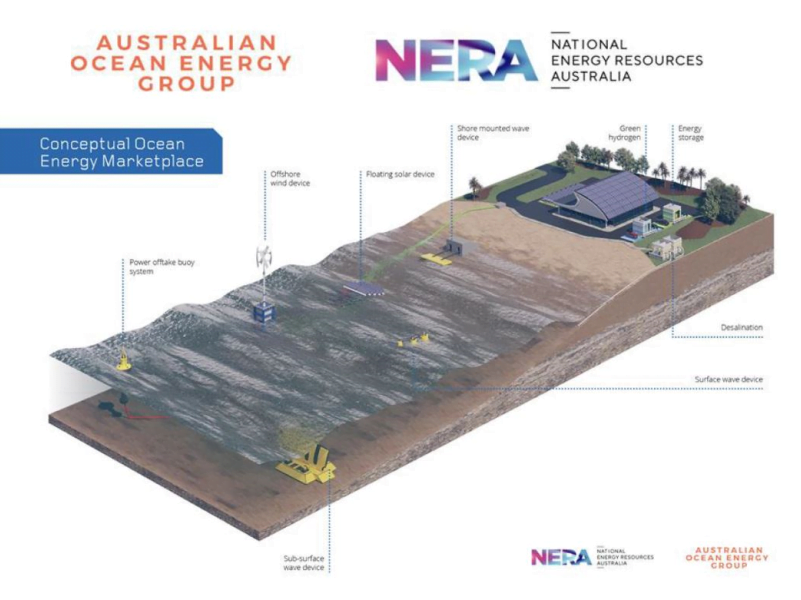A feasibility study for a new ocean-energy market innovation hub in the southwest of Western Australia has been launched with the support of National Energy Resources Australia, one of the federal government’s Industry Growth Centres.
Plans for the proposed hub, to be based in Albany, includes an ocean energy microgrid composed of various renewable technologies, including wind, wave, solar, seafloor pumped hydro, as well as storage systems. It is planned to feature operational examples of renewable energy applications such as green hydrogen production, desalination, and electric vehicle charging.

This hub would serve as a demonstration of what a “commercial, integrated ocean energy system” might look like. The physical hub is phase two of the Australian Ocean Energy Marketplace (AOEM). It will also serve as an industry base for research and development.
Phase one is a simulated digital marketplace based in Albany. This tracks real-time data on energy production from global ocean-energy sources to provide users, particularly in the blue economy, with a model of how their energy needs could be met.
The AOEM is being developed by the Australian Ocean Energy Group (AOEG) industry cluster. AOEG currently represents 31 different organisations, universities, and individuals. Founding sponsors of the group are the federally funded NERA and climate innovation community Climate-KIC Australia.
Global energy consultancy Xodus Group will conduct the feasibility study. The firm also has operations in the United Kingdom, the United States, Japan, Abu Dhabi, Dubai, and Cairo.
AOEG Cluster Manager Stephanie Thornton said that the benefits of integrating ocean energy, offshore wind, and other renewables are not known but much of Australia’s energy markets.
“We need to address this and raise the market’s awareness of the benefits of multi-purpose offshore energy parks that can optimise energy planning solutions as well as deliver low carbon solutions to marine-based industries and communities,” Ms Thornton said.
“We’ve identified there are four main barriers to the adoption of ocean energy — awareness, accessibility, affordability, and commercial project delivery. The IOEM project has been designed to address these challenges head-on and directly connect key end-users to technical solutions in development.”
“The blue economy market sector presents a large and immediate opportunity for wave and tidal energy to have a significant decarbonisation impact. Through the IOEM we hope to demonstrate our vision. We believe seeing leads to understanding and understanding underpins adoption. This philosophy is at the heart of AOEG’s vision for the marketplace.”
NERA chief executive Miranda Taylor praised the AOEG cluster for facilitating collaboration and innovation to reach net zero as well as produce “strong offshore renewable sector, blue economy and diverse businesses”.
According to Geoscience Australia, Western Australia, South Australia, Victoria and Tasmania are the states with the greatest wave energy resources. In particular, some sections of the Tasmanian coast that are less than 50 metres deep produce total wave energy of more than 1100GJ/m annually.
CSIRO research found that wave energy has the potential to produce 11 per cent of Australia’s energy by 2050.
The University of Western Australia has operated a Wave Energy Research Centre node in Albany since November 2019. State government funding worth $3.75 million helped open the centre.
Editor’s note: An earlier version of this story had conflated detailed information about wave energy with tidal energy. The story has since been amended to correct this.
Do you know more? Contact James Riley via Email.


I am pretty sure that is not what the Geoscience report says (and I co-authored the CSIRO report). Our biggest WAVE energy resource is along the southern coast (tip of WA to west coast Tasmania). Our biggest TIDAL resources are in northern Australia. Our biggest ocean currents are along to West and East coasts.
Of these resources, the wave resource is the largest, followed by tidal.